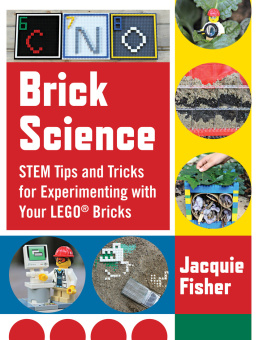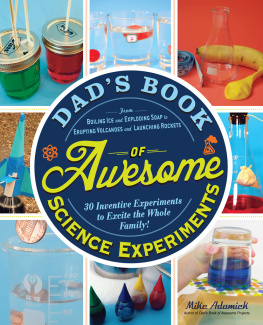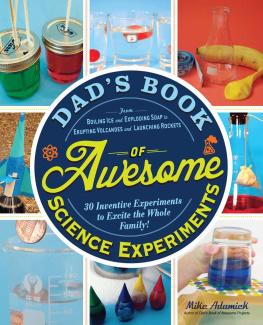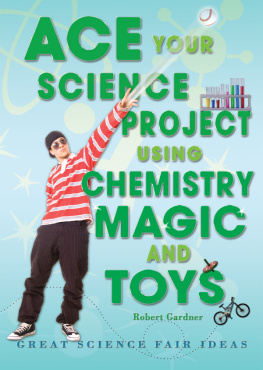

2016 Quarto Publishing Group USA Inc.
Text 2016 Liz Lee Heinecke
Photography 2016 Quarto Publishing Group USA Inc.
First published in the United States of America in 2016 by
Quarry Books, an imprint of
Quarto Publishing Group USA Inc.
100 Cummings Center
Suite 406-L
Beverly, Massachusetts 01915-6101
Telephone: (978) 282-9590
Fax: (978) 283-2742
QuartoKnows.com
Visit our blogs at QuartoKnows.com
All rights reserved. No part of this book may be reproduced in any form without written permission of the copyright owners. All images in this book have been reproduced with the knowledge and prior consent of the artists concerned, and no responsibility is accepted by producer, publisher, or printer for any infringement of copyright or otherwise, arising from the contents of this publication. Every effort has been made to ensure that credits accurately comply with information supplied. We apologize for any inaccuracies that may have occurred and will resolve inaccurate or missing information in a subsequent reprinting of the book.
Digital edition published in 2016
Digital edition: 978-1-63159-183-9
Softcover edition: 978-1-63159-115-0
Library of Congress Cataloging-in-Publication Data
Names: Heinecke, Liz Lee, author.
Title: Outdoor science lab for kids : 52 family-friendly experiments for the yard, garden, playground, and park / Liz Lee Heinecke.
Description: Beverly, Massachusetts : Quarry Books, an imprint of Quarto Publishing Group USA Inc., 2016. | 2016 | Audience: Ages 7+. | Audience: Grades 4 to 6.
Identifiers: LCCN 2016003845 (print) | LCCN 2016004751 (ebook) | ISBN 9781631591839 (flexibound) | ISBN 9781631591839 ()
Subjects: LCSH: Science--Experiments--Juvenile literature. | Science--Study and teaching (Elementary)--Activity programs. | Science projects--Juvenile literature.
Classification: LCC GE115 .H45 2016 (print) | LCC GE115 (ebook) | DDC 507.8--dc23
LC record available at http://lccn.loc.gov/2016003845
Design, Cover Design, Page Layout: Leigh Ring //www.ringartdesign.com
Photography: Amber Procaccini Photography // www.aprocacciniphoto.com
CONTENTS
Guide
INTRODUCTION
THE GREAT OUTDOORS IS NATURES OWN SCIENCE LAB, TEEMING WITH POSSIBILITY. When we turn off the screens and head out the screen door, were immersed in an environment that encourages exploration. Whether its sunny or snowing, theres always something new to discover.
Writing this book was an adventure that stretched from the last snow of spring to the colorful foliage of early fall. The kids and I spent hot summer afternoons hiking through shady woods. Cornstarch frescos adorned our sidewalks. We used a funnel and garden hose taped to a ladder to turn an empty air mattress into a waterbed. Curious neighbors stopped by to see what we were up to, and one foggy night I dragged the entire family on a moonlit nature hike.
As we experimented our way through the fifty-two labs, projects too messy for the kitchen proved perfect for the driveway, and picnic tables served as lab benches for mixing up lip balm and super spheres. My kids and their friends had a blast blowing huge bubbles and made foaming slime in the backyard. Finding a water bear in tree moss proved to be a challenge, but once we got the hang of it, we were able to observe several of the amazing creatures wiggling under our microscopes lense.
Some of the experiments, such as making an aluminum foil boat for kiddie pools, were perfect for the younger set, while my middle schoolers gravitated toward the more involved experiments. Collecting earthworms was a huge hit, and we were all astonished by the tricks you can do with supercooled water. As we explored, we discovered that a magnifying glass and science notebook enhance any outdoor experience.
Spending time outside had fitness benefits as wellits hard to sit still when youre searching, collecting, and experimenting. Even our eye muscles got a workout every time we looked into the distance. Peering at moss through a magnifying glass and wading barefoot into a lake gave us a new perspective and reconnected us to the natural world.
Some days it took a fair bit of prodding to get my kids outside, but it was well worth the effort. Nothing compares to exploring our amazing planet with the smell of the seasons and the wind in your hair. Whether you have all day to explore a nature center, or an hour to spend at the playground, or just want to hang out in the driveway, the labs in this book will help you kick off some outdoor science fun of your own.
ABOUT THE LABS
This book will introduce you to fifty-two fun science projects you can do outside. A few have steps that are better suited for a table, such as peering at pond water creatures through a microscope, but theyre all meant to be tackled outdoors.
Because several labs involve ecosystems and their inhabitants, youll have to pay attention to the ebb and flow of seasons to find the best projects for any given day. While many of the experiments are best suited to warmer months, there are some you can do in the snow and several you can bring inside on a cold or rainy day.
Each experiment includes an easy-to-understand explanation of the science behind the project to introduce you to the vocabulary and ideas youre exploring. The labs are set up to make science exploration as simple as following a recipe, with sections detailing the following:
MATERIALS
SAFETY TIPS & HINTS
PROTOCOL (INSTRUCTIONS)
THE SCIENCE BEHIND THE FUN
CREATIVE ENRICHMENT
The Materials section lists all the ingredients youll need to conduct each experiment. Safety Tips & Hints gives you some common-sense guidelines for doing the experiments. Protocol is a scientific word for instructions, and each Protocol takes you step-by-step through the basics of the experiment. The Science Behind the Fun offers simple scientific explanations for each experiment, while Creative Enrichment gives you variations or ideas for taking the project a step or two further, ideally inspiring you to come up with more questions and ideas on your own.
For kids, the process of experimentation is as important as the results, and its essential to allow them the freedom to dive in. Measuring, scooping, stirring, digging in the dirt, and getting wet are all part of the outdoor science experience. Wading barefoot into a cool stream to collect samples creates a physical connection to the environment, making any aquatic project memorable.

















